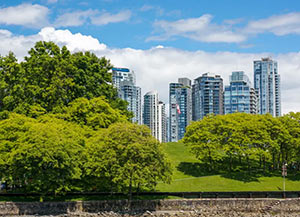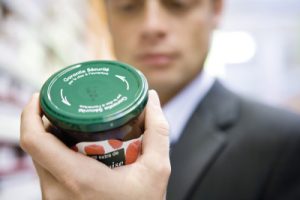

Sustainable city
An eco-label is a guarantee of environmental quality. Affixed to a product or service, it guarantees, according to the requirements of its specifications, that the producer or service provider has sought to reduce its impact on the environment. In Europe, over 400 labels adorn our everyday consumer products. But most of them are self-declared, rather than true signs of recognition granted after third-party auditing, i.e. certifications of conformity to rules and good practices defined in specifications. The specifications for a green label include a number of requirements that guarantee a superior level of environmental awareness. It may be based on a standard (NF, EN or ISO), but not necessarily.
To be credible, a company wishing to have its ecological product labeled must first undergo a certification audit carried out by an independent organization accredited by COFRAC. The certification body regularly verifies compliance with the specifications. The eco-label enables consumers to recognize at a glance which products are more environmentally friendly. In addition to its commitment to the planet, the manufacturer also gains a competitive advantage. Properly used, eco-labels can help to improve environmental performance across the board, to the benefit of society as a whole.
Focus on the AB label, the European ecolabel and NF Environnement
 Labels can be managed by a professional organization, an industry sector (Eco artisan, Imprim’vert, Cosmébio…) or an association (gîtes Panda WWF, for example).
Labels can be managed by a professional organization, an industry sector (Eco artisan, Imprim’vert, Cosmébio…) or an association (gîtes Panda WWF, for example).
To avoid the confusion and skepticism that some labels can provoke, serious environmental declarations comply with the requirements of ISO 14024 (Environmental labels and declarations – Type I environmental labelling – Principles and procedures).
This is particularly true of eco-labels managed by public authorities. Signs of excellence, these official ecolabels guarantee quality products that meet demanding ecological criteria. They are the fruit of negotiations between manufacturers, non-governmental associations, retailers and public authorities. These partners choose one or more operators, such as AFNOR Certification, to distribute them. The most common eco-labels in France are :
- Organic farming in the European Union (“Eurofeuille”)
European Ecolabel
official label of the European Union
NF Environnement
the official French ecolabel
The law on the fight against waste and the circular economy of February 10, 2020 introduces a new voluntary environmental display scheme, dubbed “Environmental Impact”. The score awarded is a summary of the product’s main environmental impacts calculated over its entire life cycle, using the LCA method. Four professional sectors are participating in the deployment of this display in France under the supervision of ADEME:
- Furnishings
- Clothing
- Hotels
- Electrical and electronic products
The rating for textile products, for example, takes into account nine criteria: greenhouse gas emissions (GHG), aquatic toxicity, water consumption, depletion of mineral resources, impact on energy resources, water acidity, photochemical pollution, eutrophication and impact on biodiversity. Today, environmental labelling is voluntary. However, a European directive could make this compulsory in the near future, at least for new garments. It’s true that the textile industry is the second most polluting sector in the world after the oil and gas industry.
Mandatory labelling

The textile industry would thus join the sectors already required to show their credentials. Energy labelling, which is similar to an eco-label, is compulsory for major household appliances (dishwashers, ovens, washing machines, etc.), light bulbs, motor vehicles, tires and property advertisements. The label indicates the energy consumption of the product or building according to a simplified classification (A, B, C, D, E…) that is easy for consumers to understand. Another compulsory label: volatile pollutant emissions from construction and decoration products intended for indoor use: partitions, flooring, insulation, paints, varnishes, glues, adhesives, etc.
Good to know: on its website, ADEME highlights the best environmental labels (“Excellent choice” and “Very good choice”) for 12 categories of everyday products: food, maintenance and cleaning, hygiene and beauty, clothing and footwear, furniture, bedding, home textiles, DIY and decoration, stationery and supplies, multimedia, games and toys and accommodation.